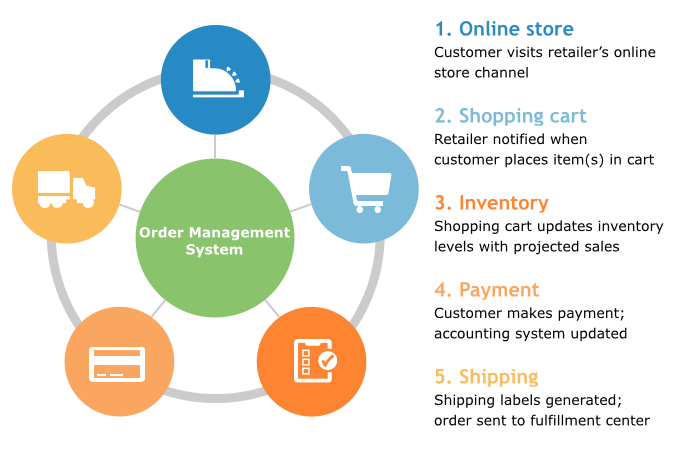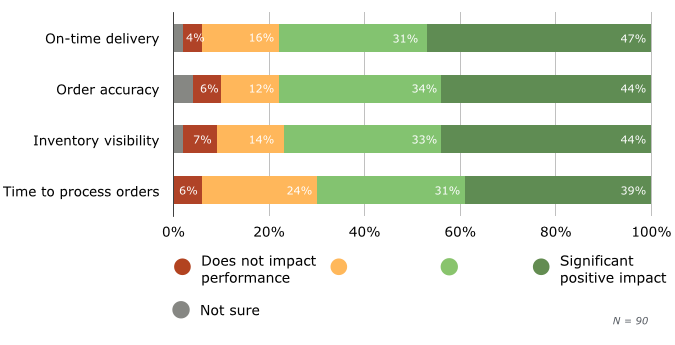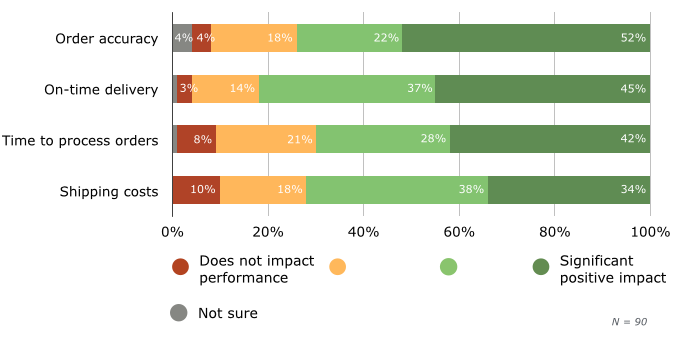Order management systems are the center of the ecommerce wheel that keep all the integrations, or spokes, connected and turning. And using one can have a considerable impact on an ecommerce merchant’s operations. According to a research study performed by Software Advice, a software consulting company, there are significant benefits to using an order management system. A survey of small online retail business with revenues of $50M or less who used an order management systems revealed that:
- 55% of merchants saw a significant reduction in order processing time
- 60% of businesses improved in on-time delivery with integrated shipping services
- Over 50% of the businesses reported improved inventory visibility
If anything’s certain from those tidbits alone, an order management system can positively influence a store’s efficiency and effectiveness. But let’s avoid reinventing the wheel, and briefly cover what exactly they do, as well as how they fit in with all the parts of an ecommerce machine.
Spokes and the Hub
There are multiple services an ecommerce merchant uses to sell online — from storefront and shopping cart, to payment gateway and fulfillment. But, from beginning to end of the purchase process, an order management system pulls them all together because it relays data to every part, keeping tabs on the product as it journeys from supplier to customer. Below is a visual from Software Advice illustrating how all the spokes of the wheel interact:
A solid order management system integrates with major marketplaces and carts like Amazon, eBay, Shopify, or Bigcommerce, allowing the merchant to connect to these channels and keep each part of the wheel automatically up-to-date on anything related to shipping and inventory, whether its stock levels, fulfillment statuses, or shipping costs. And if a business starts opening additional channels, the order management system simply adapts to support and connect to it along with the others, communicating the status of every order, quantity of product, and more.
Keeping the Multichannel Wheels Turning
When asked how integrating an order management system with their online stores impacted certain aspects of their business, respondents’ responses are definitely in the green:
Effects of Integrating Order Management Systems with Ecommerce Stores
Incorporating an order management system definitely contributes to greater operational ease. This should come as no surprise because the very purpose of an order management system is to collect information throughout the business for the merchant to view in one unified dashboard. That ability alone greatly reduces the tedious grind of setting up and processing orders.
As an online business grows with sales flowing in like clockwork, opening new sales channels is a typical path that most ecommerce entrepreneurs take. Although expanding to more sales outlets is great, the added administrative needs can get time-consuming, especially if merchants are manually plugging in their order, inventory, and financial information to their original sales channel for an organized view of their business. A good order management system tackles multichannel needs by integrating with a variety of platforms, which is critical for reducing the challenges that come along with handling multiple avenues of selling.
Jesus Take the Wheel (When it Comes to Shipping)
When it comes to shipping, many merchants prefer someone else to take the wheel from their hands – as it can get really tedious to do on one’s own. But order management systems that include shipping services are a heavenly gift from the ecommerce gods to help out with the hell on wheels that is fulfillment. When asked how specific challenges are affected by order management systems integrated with shipping services, respondents preached the following:
Effects of Integrating Order Management Systems with Shipping Services
It’s clear from the chart that systems with shipping services that are integrated into order management systems are beneficial to retailers across three dimensions- higher margins, improved shipping processes and enhanced customer happiness.
Better margins because these apps let merchants compare and pick shipping rates from multiple carriers – sometimes even offering special negotiated rates from certain carriers. Improved shipping processes because they automate repetitive tasks of copying and pasting shipping addresses, and tracking numbers back and forth across disparate systems. And enhanced customer happiness because of on-time (or even before time) delivery and reduced errors on orders.
Most order management systems integrate with online stores, but they don’t necessarily come with shipping services. While it is possible to use yet another app outside of the order management system to manage shipping, that comes with the pitfalls of information being lost between two systems and multiple points of failure.
Case in point is when merchants need to switch between these apps trying to figure out if they have enough inventory on hand before creating the shipping label. A good order management system will have both integrated in one unified user interface. In essence shipping services almost seem like an awkward third wheel to inventory management solutions and online stores. Nobody wants to ride a tricycle made of three integrations – store, inventory app, and shipping app – right?
Speaking of which, this is a bicycle of a topic, and this post is just the first wheel! Expect another post next week covering additional order management system research from Software Advice.





